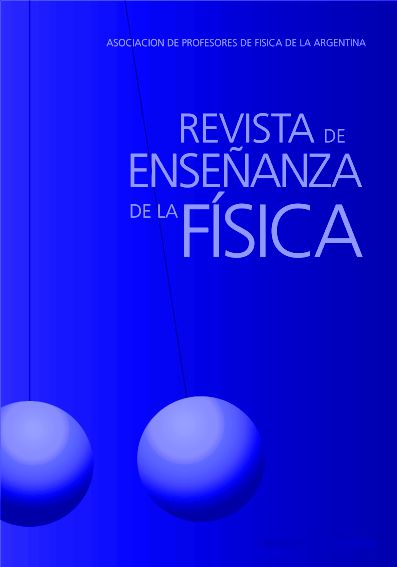Vínculos entre la enseñanza de la física y la epistemología: el caso de la probabilidad
DOI:
https://doi.org/10.55767/2451.6007.v27.n1.11410Keywords:
Epistemología, Filosofía de la física, Probabilidad, Física educativa, Lenguaje matemáticoAbstract
Luego de algunas consideraciones sobre la relación entre la epistemología general y la filosofía de la física, se exponen diferentes interpretaciones del cálculo de probabilidades y sus aplicaciones a la física. Se pretende una aproximación a los diferentes significados atribuidos a la probabilidad en los últimos siglos. El artículo está orientado a docentes e investigadores dedicados a la enseñanza de la física.References
Bayes, T. (1764). An Essay Towards Solving a Problem in the Doctrine of Chances. Philosophical Transactions of the Royal Society of London, 53, 370-418.
Corfield, D., Williamson, J, (Eds). (2001). Foundations of Bayesianism. Dordrecht: Kluger Acad. P., p. 5.
Daboni, L. (1987). Bruno de Finetti, Bollettino dell’Unione Matematica Italiana 7, 283-308.
Daston, L. (1988). Classical Probability in the Enlightenment. Princeton: Princeton Univ. Press.
Engquist, B., Schmid, W. Eds.(2001). Mathematics Unlimited – 2001 and Beyond. Berlin: Springer.
Earman, J. (1992). Bayes or Bust? Cambridge Mass.: The MIT Press.
de Finetti, B. (1981). Scritti (1926 – 1930). Padua: Cedam.
de Finetti, B. (1991). Scritti (1931 – 1936), Bologna: Pitagora Ed.
Gigerenzer, G. et al. Eds. (1989). The Empire of Chance: How Probability Changed Science and Everyday Life. Cambridge: Cambridge Univ. Press.
Gillies, D. (2000). Philosophical theories of probability. London: Routledge, p. 4.
Hacking, I. (1975). The Emergence of Probability. Cambridge: Cambridge Univ. Press.
Hacking, I. (1990). The Taming of Chance. Cambridge: Cambridge Univ. Press.
Hobson, M. et al. (2010). Bayesian Methods in Cosmology. Cambridge: Cambridge Univ. Press.
Keynes, J. (1921). A Treatise on Probability. New York: The Macmillan Co., p. 4.
Kolmogorov, A. (1933). Grundbegriffe der Wahrscheinlichkeitsrechnung. Berlin: Springer.
Kolmogorov, A. (1935). Trudy II Vsesojuznogo Matematicheskogo Sbesda. Leningrad. 24-30 Yunya 1934 G., vol. 1, 349-358. (Trad, del ruso: Sobre algunas corrientes contemporáneas en teoría de la probabilidad).
Krüger, L. et al. eds. (1987). The Probabilistic Revolution, 2 vols. Cambridge Mass.: The MIT Press.
Laplace, P. (1814, 1947). Ensayo filosófico sobre las probabilidades. Buenos Aires: Espasa-Calpe Argentina, S.A.
Popper, K. (1935, 1962). La lógica de la investigación científica. Madrid: Ed. Tecnos.
Popper, K. (1957). The Propensity Interpretation of the Calculus of Probability, and the Quantum Theory. En Körner (ed.). Observation and Interpretation, Proceedings of the Ninth Symposium of the Colston Research Society; University of Bristol, 65-70; 88-9.
SEP (2003). Stanford Encyclopedia of Philosophy. http://plato.stanford.edu/Bayes’ Theorem. Revision: 30-09-2003.
Todhunter, I. (1865, 1965). A History of the Mathematical Theory of Probability. New York: Chelsea Publ.
Von Mises, R. (1928, 1946). Probabilidad, estadística y verdad. Buenos Aires: Espasa- Calpe Argentina, S.A.
Von Plato, J. (1994). Creating Modern Probability. Cambridge: Cambridge Univ. Press.
Wigner, E. (1960). The Unreasonable Effectiveness of Mathematics in the Natural Sciences. Comm. on Pure and Applied Mathematics, Vol. XIII, 001 – 14.
Wittgenstein, L. (1922). Tractatus Logico-Philosophicus. London: Routledge and Kegan Paul Ltd.
Downloads
Published
Issue
Section
License
Copyright (c) 2015 Víctor Rodríguez

This work is licensed under a Creative Commons Attribution-NonCommercial-NoDerivatives 4.0 International License.
Aquellos autores/as que tengan publicaciones con esta revista, aceptan los términos siguientes:Los autores/as conservarán sus derechos de copiar y redistribuir el material, bajo los términos estipulados en la Licencia de reconocimiento, no comercial, sin obras derivadas de Creative Commons que permite a terceros compartir la obra bajo las siguientes condiciones:
- Reconocimiento — Debe reconocer adecuadamente la autoría, proporcionar un enlace a la licencia e indicar si se han realizado cambios. Puede hacerlo de cualquier manera razonable, pero no de una manera que sugiera que tiene el apoyo del licenciador o lo recibe por el uso que hace.
- NoComercial — No puede utilizar el material para una finalidad comercial.
- SinObraDerivada — Si remezcla, transforma o crea a partir del material, no puede difundir el material modificado.
- Los autores/as podrán adoptar otros acuerdos de licencia no exclusiva de distribución de la versión de la obra publicada (p. ej.: depositarla en un archivo telemático institucional o publicarla en un volumen monográfico) siempre que se indique la publicación inicial en esta revista.
- Se permite y recomienda a los autores/as difundir su obra a través de Internet (p. ej.: en archivos telemáticos institucionales o en su página web) antes y durante el proceso de envío, lo cual puede producir intercambios interesantes y aumentar las citas de la obra publicada. (Véase El efecto del acceso abierto).










